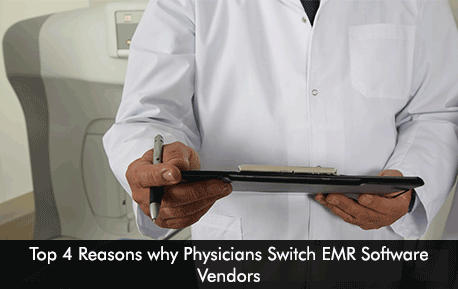Outdated Electronic Medical Records (EMR) software systems can be a nightmare for healthcare providers. Hence users are prone to make a switch to a better, advanced, efficient software solution that can bring more value and revenue to their medical practice. The new change can be costly for your practice so it is advised that you strike the right EHR software decision in the first place to avoid any inconvenience in the future.
Most common reasons and issues that push clinicians to change their existing software solution
There are many reasons which may cause hospitals and healthcare providers to change EMR software vendors. Most healthcare organizations look for a switch to offer the highest quality of care to their patients.
- Lack of interoperability – Interoperability solutions are the most important and crucial functions of an Electronic Health Records software. If a medical practice’s current software system lacks sharing of patient data to coordinate care and enhance the care process then they will look out for software vendors that offer seamless sharing of patient data between different EHR software systems and healthcare providers facilitating patient care and making data universally shareable.
- Time-consuming documentation workflow – Time-consuming and lengthy documentation workflow mean that your existing software system is outdated and it requires a lot of time for hospital staff members inputting patient information. In the world of technology, doctors look for an EMR software system that updates their workflows with features that enhance practice efficiencies and productivity by speeding up daily administrative and clinical tasks.
- Lack of built-in alerts for medical coding – Inefficient coding processes and the lack of in-built control to alert you with incorrect coding can cause your practice to experience a financial blow. A top-rated EHR software should create alerts for diagnosis and coding errors for accurate and precise coding procedures. It may be a time to upgrade your software system if features of reminders are absent which allows physicians to practice efficiently.
- Absence of mobile access and poor communication – Your Electronic Medical Records software system must provide the functionality of mobile access which enables patients to stay on top of their healthcare process by using their smartphones. In a demanding and busy life, patients utilize their phones to keep track of their appointments, medications, and other healthcare information including health conditions. If patients are unable to communicate with their provider round the clock then they’d be dissatisfied. Patient portal facility and clinician communication are essential features to keep patients happy and connected with their health information. If your EHR software offers poor mobile access and communication then it is high time to make a switch.
Challenges of switching EMR software vendors
The biggest and greatest challenge practices face is transferring patient data from old software systems to new ones. Many problems with the transfer of patient data include duplication of patient names and most of the data needs to be re-entered manually which is time-consuming and taxing. Other roadblocks include loss of productivity and the time required to train the staff members to the new software system. Hence it is advised to always evaluate EMR software vendor options upon functionality, ease of use, training, and interoperability. Here are some good Electronic Medical software options you can consider for your medical practice.
metadescription – Providers might be unhappy with their current EMR Software solution as it may lack the right features to bring efficiencies and lack interoperability. A switch to a better software solution might be the only option but it has its challenges.






